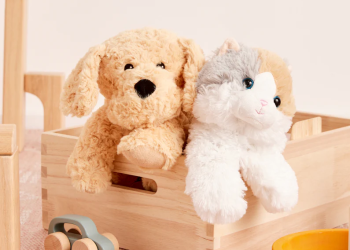Bringing home an adopted pet is an exciting and rewarding experience, but the first week is crucial in setting the foundation for a successful relationship. This initial period is a time of adjustment for both you and your new companion as they settle into an unfamiliar environment. By planning ahead and providing consistent care, you can help your adopted pet feel safe, secure, and loved. Here’s a comprehensive guide to navigating the first week with your new pet.
Preparing for Arrival
Set Up a Safe Space
- Designate a quiet area where your pet can retreat if they feel overwhelmed. This space should include:
- A comfortable bed or blanket
- Food and water bowls
- Toys or chew items
- A litter box (for cats) or potty pads (for dogs)
Gather Essential Supplies
- For Dogs: Leash, collar, ID tag, and waste bags.
- For Cats: Litter, litter box, scratching post, and grooming tools.
- For Small Animals: A secure enclosure, bedding, and species-specific food.
Schedule a Veterinary Appointment
- Arrange a health check-up within the first week to ensure your pet is healthy and up-to-date on vaccinations.
The First Day
Introduce the Home Gradually
- Allow your pet to explore their designated safe space before giving them access to the rest of the house.
- Supervise their exploration and observe their reactions to different areas.
Keep Interactions Calm
- Avoid overwhelming your pet with too much attention or activity.
- Allow them to approach you at their own pace and respect their boundaries.
Establish a Routine
- Begin feeding, walking, and playtime schedules on the first day. Consistency helps pets feel secure and reduces anxiety.
Building Trust and Bonding
Use Positive Reinforcement
- Reward good behavior with treats, praise, or affection.
- Avoid punishment, which can create fear and hinder trust-building.
Spend Quality Time Together
- Engage in activities your pet enjoys, such as gentle play or quiet companionship.
- For shy pets, simply sitting nearby can help build trust.
Communicate Gently
- Use a calm and soothing tone when speaking to your pet.
- Incorporate their name into positive interactions to help them learn it quickly.
Introducing Your Pet to Family Members
Adults
- Allow each family member to interact with the pet individually to avoid overwhelming them.
- Teach everyone to approach the pet calmly and let the pet initiate contact.
Children
- Supervise all interactions between children and the pet.
- Teach kids how to handle the pet gently and respectfully.
Other Pets
- Conduct introductions slowly and in neutral spaces if possible.
- Keep initial interactions brief and closely monitored.
- Use barriers, such as baby gates, to allow visual contact without direct interaction.
Addressing Common Challenges
Shyness or Fear
- Provide a quiet environment with minimal disruptions.
- Allow your pet to approach you when they feel comfortable.
Potty Accidents
- For dogs: Take them outside frequently and reward them for eliminating in the correct spot.
- For cats: Ensure the litter box is clean and placed in a quiet, accessible location.
Excessive Barking or Meowing
- Identify potential triggers, such as hunger, boredom, or anxiety.
- Provide distractions like toys or calming aids to reduce vocalization.
Establishing a Routine
Feeding
- Stick to the diet your pet was previously on to avoid digestive upset. Gradually transition to a new food if desired.
- Feed at the same times each day to establish consistency.
Exercise
- Schedule daily walks or playtime based on your pet’s energy level and needs.
- Engage in activities that provide both physical and mental stimulation.
Rest
- Ensure your pet has a quiet and comfortable place to sleep.
- Puppies and kittens may require more frequent naps.
Monitoring Health and Behavior
Observe for Signs of Stress
- Common signs include hiding, loss of appetite, excessive grooming, or vocalization.
- Address stressors by providing a calm environment and avoiding sudden changes.
Look for Health Issues
- Monitor your pet for signs of illness, such as vomiting, diarrhea, or lethargy.
- Contact your veterinarian promptly if you notice any concerning symptoms.
Enrichment and Training
Mental Stimulation
- Provide interactive toys, puzzle feeders, or training games to keep your pet engaged.
- Rotate toys regularly to maintain interest.
Basic Training
- Teach simple commands, such as “sit,” “stay,” or “come,” using positive reinforcement.
- Focus on house training or litter box habits as needed.
Socialization
- Expose your pet to different environments, people, and animals gradually to build confidence.
- Reward calm and positive behavior during new experiences.
Setting Long-Term Goals
Strengthen the Bond
- Continue spending quality time with your pet through play, training, and affection.
- Celebrate small milestones to build a strong and trusting relationship.
Regular Check-Ins
- Schedule routine veterinary visits to monitor your pet’s health and well-being.
- Adjust feeding, exercise, or training plans as your pet’s needs evolve.
The first week with your adopted pet is a time of discovery, adjustment, and connection. By providing a stable environment, consistent care, and plenty of patience, you can set the stage for a happy and fulfilling life together. Your efforts during this crucial period will create the foundation for a lifelong bond filled with love and companionship.












